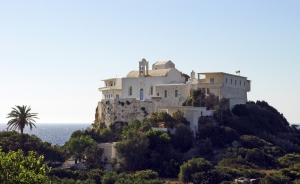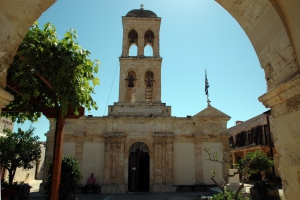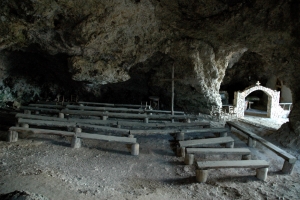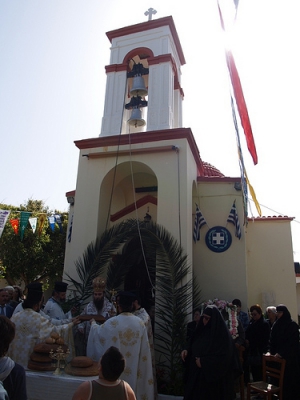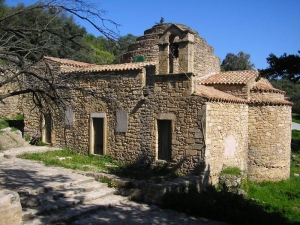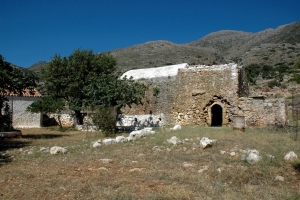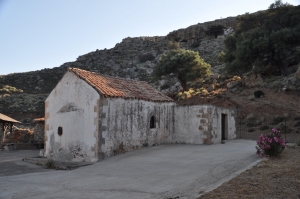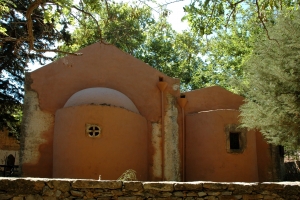The monastery of Panagia Chrisoskalitissa is located 72km south of Chania, very close to the magnificent lagoon of Elafonissi. It operates as a nunnery and reminds of a fortress, perched on a 35m high rock with boundless sea views.
The seaside Monastery of Panagia Odigitria is located at the base of the peninsula Spatha, about 26km west of Chania and 2.5km north of Kolimbari. The monastery is also known as Lady of the Angels Monastery of Gonia (Gonia = Corner) due to its location on the western edge-corner of the bay of Chania.
At the area Marathokefala at Spilia, 25 km west of Chania and just 3 km from Kolymbari, lies the famous historical cave of St. John the Hermit. Inside the cave there is temple of the 15th century and the foundations of old cells that date back in the 17th-18th century.
The monastery of Parthenos is a modern nunnery dedicated to Life Giving Spring. It was founded in 1905 and was renovated in 1962. Here operated the Urban School of Girls and the first Deaf school in Crete.
The church of Archangel Michael is one of the finest Byzantine monuments located at village Episkopi, Kissamos province, where it operated as a diocese (episkopi) during the second Byzantine Period. The yard housed a Byzantine cemetery (7- 8th century) and today we see traces of the episcopal buildings.
The Monastery of Peter and Paul is located at Cape Rodopos (or Spatha), 40km northwest of Chania and 12.5 km from the village Rodopou and is reached through a rocky dirt road. With the abbey of Saint John in Giona, a few kilometers earlier, it flourished during the late Venetian rule. Just after the occupation of Crete by the Turks the monastery became a dependency of the powerful Hodeghetria Gonia monastery.
The small monastery of Hypapante (Presentation of Jesus at the Temple) operated at the site of Champatha (Kissamos province), with spectacular views to the surrounding areas. We still see remnants of monk cells and caves where they lived. Above the church, we see the cavernous chapel of Transfiguration of the Christ, accessed only on foot.
The monastery of Saint John is located at Cape Rodopou (or Spatha), 37km northwest of Chania and 9.5km away from the village Rodopou, at a small plateau named Giona. With the nearby former monastery of Peter and Paul, a few kilometers north, they flourished during the late Venetian Era. After the conquest of Crete by the Turks both monasteries were handed to the powerful monastery Hodeghetria Gonia.











